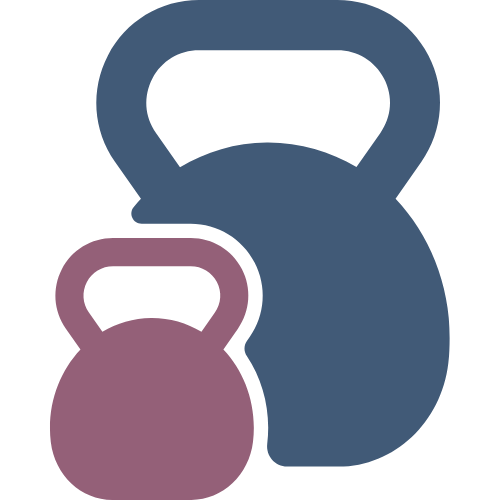Note: originally published 7/17/2017 on my old website
Coach Jean: I’m really good when I start a new exercise program, but after a few weeks or months, I lose all motivation and can’t seem to get it back. How do I stay motivated?
Quick Summary
To create a consistent exercise routine, use the fleeting “motivation” emotion to get you started, but don’t rely on it long-term. Build your exercise habits around autonomy, competence, and relatedness (Self-Determination Theory), and continually re-evaluate how your habits reflect your values and self-care needs.
How to Start
Understand first that motivation is an emotion, just like any other, that ebbs and flows.
If you want to exercise consistently (or do anything consistently, for that matter), you cannot rely on the fleeting “motivation” emotion. Instead, you can ride the wave of the initial motivation to feel excited about a new goal, but long term, you’ll need to rely on habit building.
Habit building is way more boring and way less sexy than motivation. It’s doing something small (which can be progressed over time), preferably at the same time each day, repeating it over and over, until it becomes a part of your unconscious decision-making .
The other component to creating an exercise habit is understanding why, on a deeper level, some habits are easy to create, but others just don’t seem to stick. Why were you able to go to that awesome Spin class regularly years ago, but not anymore? Why does the Body Pump class frustrate you rather than make you feel powerful like you do in yoga?
A well-researched psychological theory called the Self Determination Theory (SDT) says we need 3 things to change our behavior and create new habits that stick:
- Autonomy – ability to make our own decisions based upon our circumstances and our values (which change over time)
- Competence – knowledge, experience, confidence, and just the right amount of challenge to improve ability to perform a skillset or activity
- Relatedness – connection to others and sense of belonging to something bigger than one’s self – sense of greater purpose and meaning
If your exercise habit includes all these components, you’re much more likely to be feeling joy during exercise. Joy not only in the fact that you are exercising regularly (meeting the extrinsic/external motivation “goal”) – but exercise can give you joy in the moment (intrinsic/internal motivation).
For more on how to bring the joy back into exercise, check out this post.
Take a look at the habits or activities you’re currently trying to start. Do they meet any or all of these SDT (Self-Determination Theory) criteria?
Let’s use the example of walking:
You decide you want to start walking as a form of exercise and you use a FitBit to motivate you. At first, you love it – you enjoy the thrill of seeing how many steps you can accumulate in a day. But after a couple weeks, you’re demotivated because you rarely are able to hit 10,000 steps, your right foot has a mysterious pain, and your family makes passive aggressive comments when you leave after dinner to get your remaining 5,000 steps instead of spending time with them watching your favorite TV show. Within 2 weeks, your FitBit has found its way to the junk drawer. How can we use SDT (Self-Determination Theory) to build this walking habit?
First of all, why do you want to walk?
I want to walk to be healthier.
Drill down a few times: Why do you want to get healthier?
Because I want to have energy to do well in my job and raise my family.
Why is having a job and raising kids important?
I enjoy the challenges of my job, and I love being a part of my family.
(You can drill down even further)
How can we use SDT to create a sustainable walking habit?
10,000 steps might be way too much with your busy work and family schedule. You need the autonomy to say, “No! My goal right now is 2,000.”
You may also need a coach or a friend who has been successful doing this to help you create a plan (develop competence) and ensure your stride, foot placement, and footwear are appropriate for the miles you’re putting in to prevent injury.
Lastly, you can start holding walking meetings with co-workers and enlist family and friends to join you for regular walks during the week – getting them on board makes it fun (relatedness) and you’re promoting a healthy community around you!
Top Tips
If you’re considering starting an exercise habit or program, make sure it incorporates SDT elements:
- Are you doing this based upon your own values and self-care needs? Does the program include modifications based on your circumstances and situation? (Autonomy).
- Does the program start with the basics, teach you skills and increase the challenge over time so that you can continue to grow? (Competence)
- Do you interact with other people, get feedback, ask questions, share triumphs and challenges? (Relatedness)
If the program doesn’t, can you hire a coach or talk to a friend that’s mastered this skill? Can you join an online or in-person group that you can check-in with regularly? Sometimes the program can simply be supplemented with additional support, sometimes you might need to find a different solution.
Resources
http://selfdeterminationtheory.org/ ; overview of the theory, research and everyday application
http://habitry.com/; podcast, articles, and more relating to motivation and creating habits
